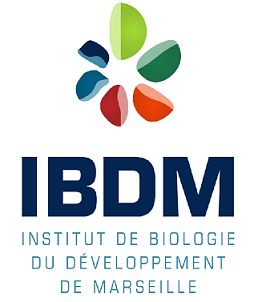A mismatch in the expression of cell surface molecules induces tissue-intrinsic defense against aberrant cells
Résumé
Tissue-intrinsic error correction enables epithelial cells to detect abnormal neighboring cells and facilitate their removal from the tissue. One of these pathways, “interface surveillance,” is triggered by cells with aberrant developmental and cell-fate-patterning pathways. It remains unknown which molecular mechanisms provide cells with the ability to compare fate between neighboring cells. We demonstrate that Drosophila imaginal discs express an array of cell surface molecules previously implicated in neuronal axon guidance processes. They include members of the Robo, Teneurin, Ephrin, Toll-like, or atypical cadherin families. Importantly, a mismatch in expression levels of these cell surface molecules between adjacent cells is sufficient to induce interface surveillance, indicating that differences in expression levels between neighboring cells, rather than their absolute expression levels, are crucial. Specifically, a mismatch in Robo2 and Robo3, but not Robo1, induces enrichment of actin, myosin II, and Ena/Vasp, as well as activation of JNK and apoptosis at clonal interfaces. Moreover, Robo2 can induce interface surveillance independently of its cytosolic domain and without the need for the Robo-ligand Slit. The expression of Robo2 and other cell surface molecules, such as Teneurins or the Ephrin receptor is regulated by fate-patterning pathways intrinsic and extrinsic to the wing disc, as well as by expression of oncogenic RasV12. Combined, we demonstrate that neighboring cells respond to a mismatch in surface code patterns mediated by specific transmembrane proteins and reveal a novel function for these cell surface proteins in cell fate recognition and removal of aberrant cells during development and homeostasis of epithelial tissues.
Fichier principal
 A mismatch in the expression of cell surface molecules induces tissue-intrinsic defense against aberrant cells.pdf (16.7 Mo)
Télécharger le fichier
A mismatch in the expression of cell surface molecules induces tissue-intrinsic defense against aberrant cells.pdf (16.7 Mo)
Télécharger le fichier
| Origine | Publication financée par une institution |
|---|
